Carl A. Kuhrmeyer: 3M Thermo-Fax - Idea To Reality
The post-war era brought prosperity to Minnesota manufacturing companies as materials that had been scarce during the war became more available. Companies like Minnesota Mining and Manufacturing (3M) experienced rapid growth as its markets were expanded overseas. Carl Kuhrmeyer, an engineer with 3M during the 1950s, saw the company take Europe by storm with it's "Thermo-Fax" dry copying system. Mr. Kuhrmeyer remembered that exciting time in a 2006 oral history interview with James E. Fogerty.
Audio
Transcript
JF: What was your first job at 3M?
CK: I started out in the Benz Building, which is on the east side of downtown St. Paul. It’s now the St. Paul Police Department Building. It was just bought by the city of St. Paul. It was the old Benz Building, the old Benz Liquor Warehouse Building. That’s where we had the New Products Division and the Central Research Division of 3M back in 1951. This was before we had the campus out on highway 94. The Central Research Department and the New Products Division were in the Benz Building. One of the projects in the New Products Division was the office copying project, and that is the project that I joined as a product development engineer in 1951, working on the original design of the Thermo-Fax Copy Machine. In fact, it was just starting to be put on the market. It really wasn't on the market yet; it was just a test market.
JF: So you were working with people who had been, obviously, working on this development for some time?
CK: Well, yes. The basic inventor of the process was Dr. Carl Miller. He was in the Central Research Department.
JF: And that was in the Benz Building, too?
CK: That was in the Benz Building. His lab was right next to our lab. The way we worked then was that we had inventions coming out of Central Research and then they were transferred into the New Products Division for development into marketing products. I was, in effect, a development engineer working on the Thermo-Fax Copy Machine; whereas Carl Miller was the inventor of the basic process. He had no interest and he had no desire to go into the development phase. He was an inventor, and that’s all he cared about.
JF: So he invented the processes and you had to make them into a marketable product?
CK: Right, I had to make them work.
JF: From ideas to reality.
CK: Right. That’s true in a lot of products at 3M. The Post-it note was the same way. Scotch Tape was the same way and fluorochemicals was the same way. The basic invention was in Central Research. We actually bought the process in fluorochemicals from an outside company, the actual invention. Then there was a group in New Products that had to develop it into a salable product. That was our function. We had a group of about eight or nine or ten people in the New Product Division developing the Thermo-Fax Copy Machine process to a marketable product to be sold to the public.
JF: This must have been kind of an interesting departure for 3M though, because so much of its business was abrasives, coatings, things like that. Tell me what it was like. Was it as different as it seems from the outside?
CK: Yes, this was a huge departure for 3M. Up until that point, everything that we sold was coated by the mile and we sold it by the square foot. Abrasives, Scotchlite tapes, all those things were coated on big coaters, and then they were cut up either into smaller rolls like a Scotch tape roll or a Post-it note. We didn’t have Post-it notes at that point. They were actually invented and developed at a later time. The Thermo-Fax Copy process included paper, which was coated on a big coater at high speeds. So that’s where the tie was to 3M. But the machine portion of the process was completely foreign to 3M. We had never built a copy machine per se. We never built anything mechanical other than a tape dispenser, which is very simple. You just mold them and you put a roll of tape in. We never had designed a machine that had motors and switches and transformers and lamps and all those things in the machine.
So in answer to your question, it was a very, very new concept for 3M. We had to develop the technology to build the machines and that took a lot of doing. That’s what I was working on. I was working on the copy machine portion. We had another group working on the copy paper portion. They were primarily chemists and chemical engineers. I was working with physicists, mechanical engineers, and electrical engineers on developing the actual machine.
JF: That would mean that you had to have a manufacturing place, too, that actually could turn out machines.
CK: But, of course, at that point, we did not have any manufacturing facilities at all for machines. So we were just developing the product. Then we had to find a manufacturing place for the machines. We started out in our own machine shop, the old Herzog Shop, which is off of Seventh Street. We started to build machines there. Well, they built machines like coaters for making abrasives and tapes, huge machines with great big steel bases. They were not accustomed to building a machine you could pick up and carry around in your office.
We soon came to the conclusion that that was not the way we were going to build the machines. So we went to an outfit in Chicago called Cook Electric. I was the project engineer, so I was traveling back and forth between Chicago and St. Paul every week by train, because, at that point, we weren’t authorized to fly. This is back in 1953. I took the overnight train from St. Paul down to Chicago on Sunday night, stayed down there until Friday, and then came back on the overnight train again. We had Cook Electric design our machine from an engineering drawing point of view and from a prototype point of view, which took us about, oh, six to eight months. We got a design. Then we decided that was not the place to build them. We actually had them build a few machines there, but then we went over to Foley Manufacturing in Minneapolis, and we let the contract out for the first machine to be built. Then I didn’t have to go down to Chicago as often. So our first machines were built there.
Then we decided that we were going to build our own machines in 3M. By that point, we had sales going. We were making copy paper in various places around the country. We decided we had to build our own factory to build paper, so we built a coating plant down in Hastings, Minnesota, at our Chemolite Plant, where we made our paper. We were still making our machines outside. We started our second paper plant in Hartford City, Indiana, and we decided it was a big enough plant that we could build machines there. So we transferred our machine manufacturing, our assembly program, to Hartford City. That’s where we built the vast bulk of our copy machines. This is the Secretary Copy Machine now.
JF: Okay. So Foley Manufacturing was the first place that you actually built those machines in Minnesota?
CK: Yes.
JF: Foley had been building them for you and then you transferred the manufacturing to Indiana?
CK: Right, because we felt we would have economy of scale. We thought our quality would be better. We’d have better control of the process. Foley really wasn’t concerned about our copy machines. They manufactured less technical products, like household utensils and equipment.
JF: You were just a client rather than—?
CK: Just a client, right. So we started making our own machines. Then, in 1955, we were expanding our production and our sales worldwide. By that time, I had transferred into manufacturing in charge of process engineering for the copy machine and the copy paper business.
I had a job for a while to expand over into Europe, to manufacture the machines and the paper in Europe. In October 1954, I guess it was, I went over there the first time. We spent about six weeks getting started on manufacturing the paper and machines in England, Germany, France, and Italy.
JF: Now, that must mean that it had really taken off in the United States. This business had really grown rather rapidly. The company wouldn’t have been expanding into Europe unless it was successful. I realize that you were in the engineering part of it, but copying was new at this time. This was something that you were selling clients.
CK: The only other dry copy machine that was on the market was Xerox. There were a number of wet copy machines, like VeriFax and Ricoh, where you had kind of a wet process where you had to expose it, and then you ran it through a liquid tank, and then it dried and you had a copy. But, Xerox and 3M were the only two dry copy machines. The 3M, the one that I was responsible for, was the one that was just a desktop copy machine. Xerox had a big floor model, the 914 they called it. I remember the number. The Xerox 914 was our big competition, but they were making copies at a much faster rate than ours. Ours was hand-fed in and out, but it was cheaper and it was convenient. It actually solved the problem for people in the office who wanted to copy something quickly and easily.
The late 1950s is when we really started this process of going over to Europe. It’s true, we started fairly early. If you read some of our history of 3M, we expanded very rapidly throughout the world in Thermo-Fax copying, and that is what started a huge growth in the International Division.
JF: When you went over at that time, tell me what it was like going into postwar Europe.
CK: Well, it was very different. The Germans hated the French. The French hated the English. The English hated the Germans. [Chuckles] The Italians were kind of on the side, not sure who they loved or who they hated. Trying to get all these people together to come up with a common goal was impossible. So that’s why I had to start manufacturing plants in each of those countries. They each wanted to make their own product. This was long before the Common Market in Europe came into being.
JF: So much for economy of scale.
CK: So much for economy of scale.
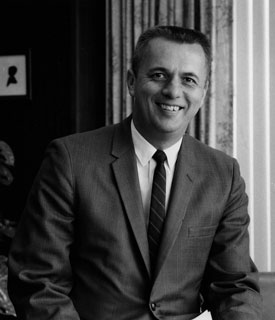
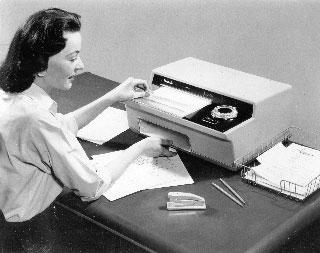

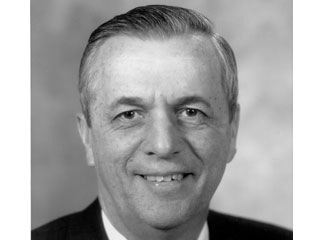
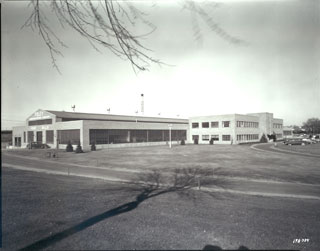
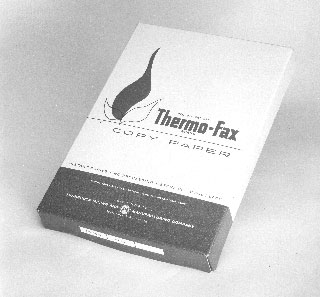

Source
Kuhrmeyer, Carl A.; James E. Fogerty, Interviewer, Minnesota Historical Society: Minnesota's Greatest Generation Oral History Project, 2006.


